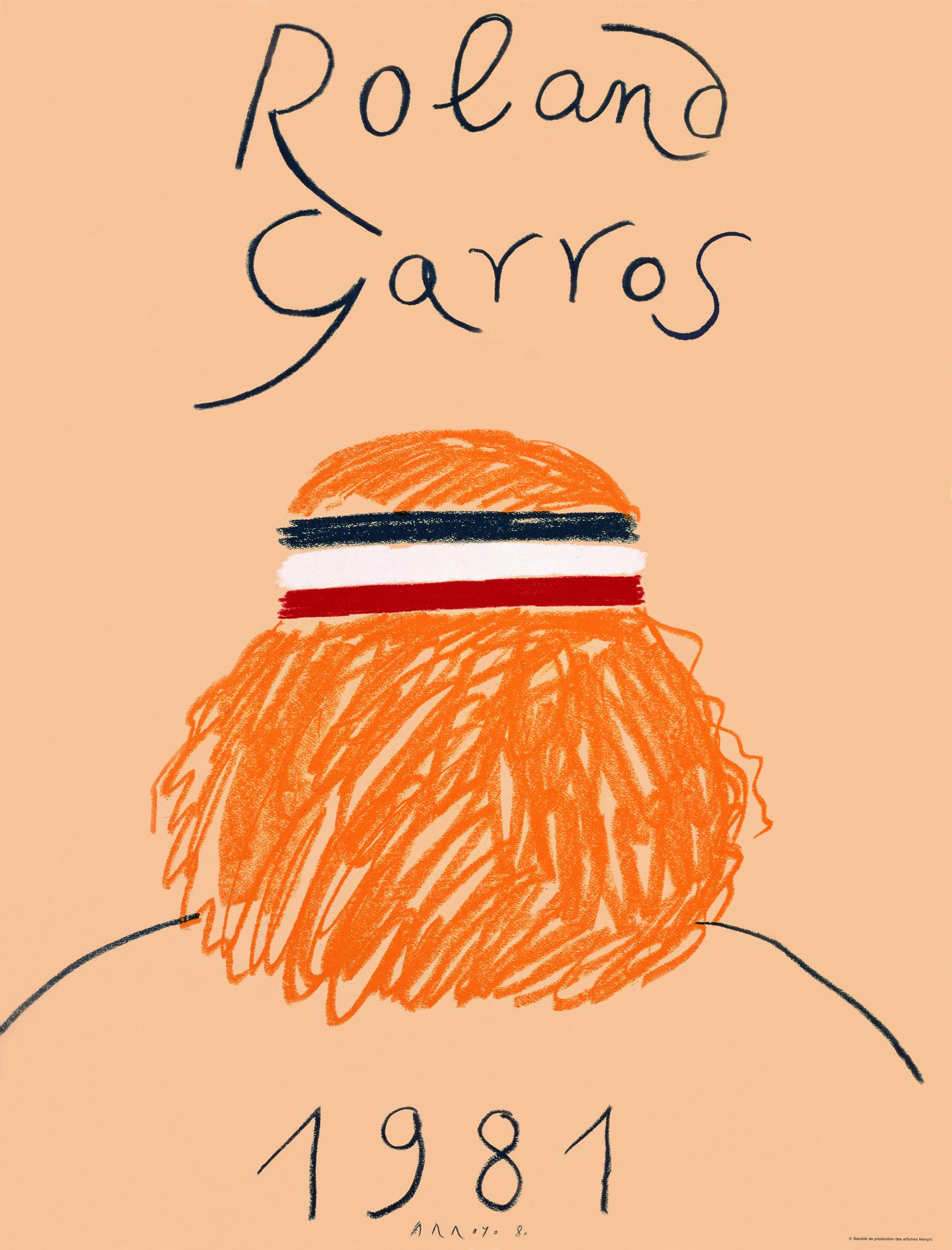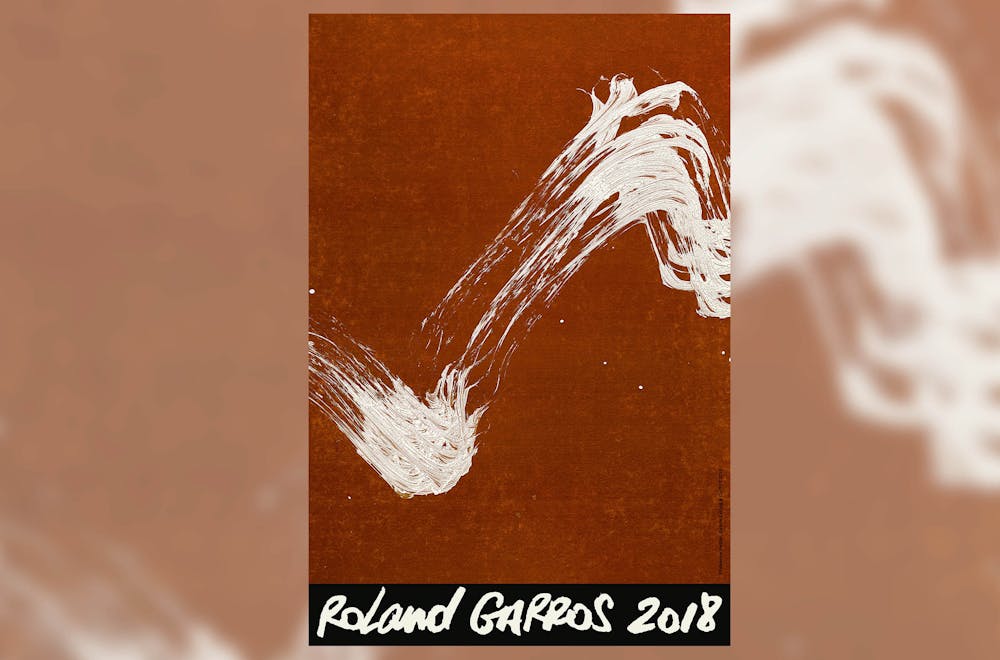See more:
Poster art at the French

Fabienne Verdier catches the ball on the bounce.

Fabienne Verdier was commissioned to create the poster for the 2018 tournament. She is the fourth woman – and first ever French artist – to design the official Roland-Garros poster, after Jane Hammond (in 2003), Kate Shepherd (in 2007) and Nalini Malani (in 2010).
For the 2018 poster, Fabienne Verdier chose to focus on a tennis ball’s bounce. She manages to perfectly capture that moment of truth in which the ball, after hitting the clay, sets off on one of many possible trajectories. The ball’s movement gives off incredible energy. “I tried to portray the lightning speed of the player’s movements. The energy that they transmit to the ball in a movement full of spontaneity, vitality, power, precision and slide. And I imagined one of those unexpected bounces that take the opponent by surprise and force them, in the following rally, to surpass themselves once again in order to get one step closer to victory in Paris,” the artist explains.
Born in Paris, Fabienne Verdier has a special relationship with the Roland-Garros tournament. She was extremely honoured to be commissioned to create this poster: “I was very touched that the French Tennis Federation and Lelong & Co. gallery asked me to create the 2018 tournament poster. For me, Roland-Garros evokes those first warm days that herald the arrival of summer in Paris, when the intense light of May and June makes the ochre clay sparkle. As the sun races across the sky, the courts turn from amber to tobacco, from saffron to sepia, from ochre to red, from sienna to brown. During every rally, the balls collect this multicoloured dust and, like comets, leave enchanting lines of energy in their wake.”
ARTIST PROFILE
Fabienne Verdier was born in Paris in 1962. Her artistic career has been punctuated by confrontations with schools of thought from different cultures and different eras. Her creative process is nourished by a hybridisation of skills and is communicated through technical inventions (huge brushes, alloy glazes, film-like sketches). After studying Fine Art, she trained in China from 1983 to 1992, alongside great masters. She then immersed herself in the work of abstract impressionist painters for many years, to create a series of pieces for the Hubert Looser Foundation in Zurich.
From 2009 to 2013 she tackled pieces by the Flemish Primitives (Van Eyck, Memling, Van der Weyden) and created an exhibition with the Groeningemuseum in Bruges. In 2014, she set up a studio inside the Juilliard School (New York), which agreed, for the first time, to a research laboratory into sound and pictorial waves.
From 2015 to 2017, she collaborated with Alain Rey for the fiftieth anniversary edition of the Petit Robert dictionary and created 22 pictures celebrating the creative energy of language. Fabienne Verdier’s work is exhibited in a number of countries and features in many public collections, including the MNAM Centre Pompidou in Paris, the Kunsthaus Zurich, and the Pinakothek der Moderne in Munich.